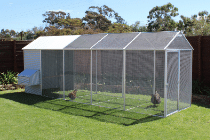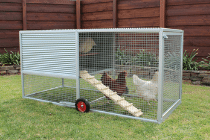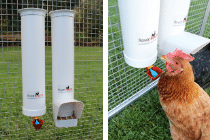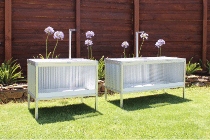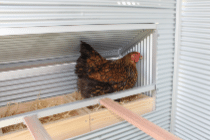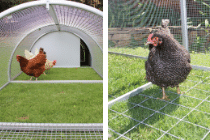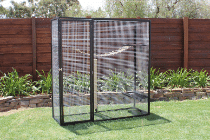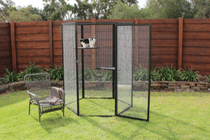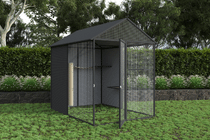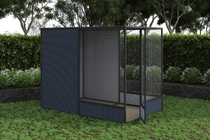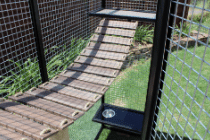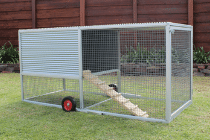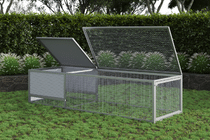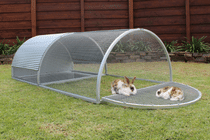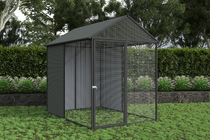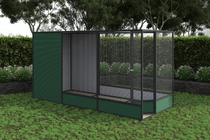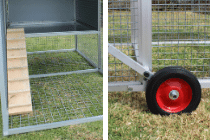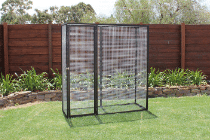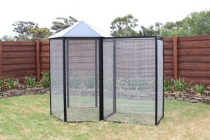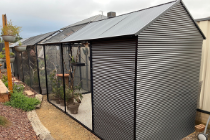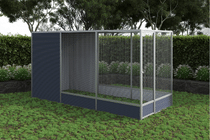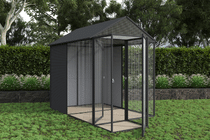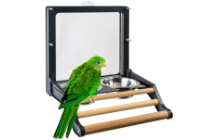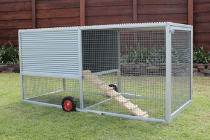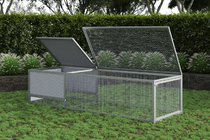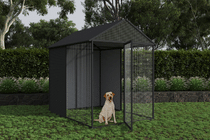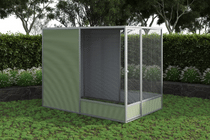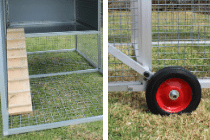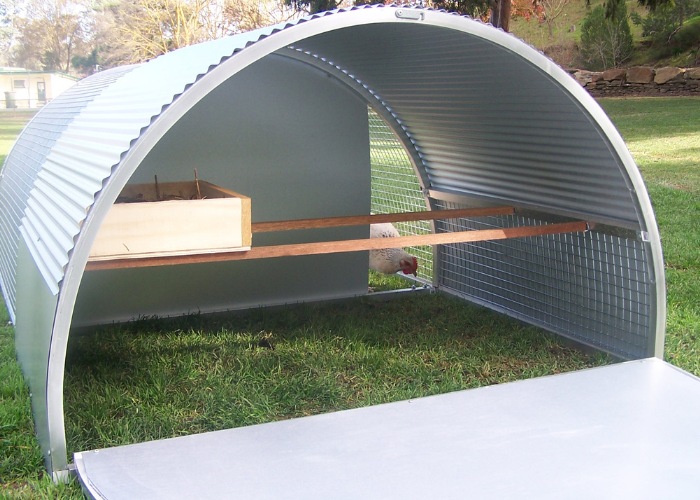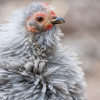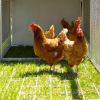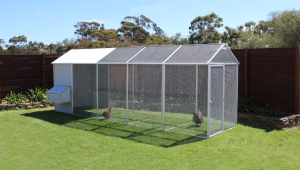Why it’s Crucial to Ventilate your Chicken Coop
Most backyard chicken owners will realise the importance of having their chicken coop well ventilated in hot weather. Fewer would realise that ventilation is still very important when it’s freezing outside and even when snow is falling!
Chickens generate a great deal of moisture, both from the water vapour from their breath as well as from their manure. It may not occur to you that chickens don’t really urinate as such, but produce very moist manure. Chicken manure is 75-80% moisture. They produce much more moisture than many would expect. As such, their chicken coops can easily get quite humid from the heat and moisture they produce. Damp air holds germs and viruses which can then lead to respiratory problems in your chickens.
Ventilation in Winter

Respiratory illness and frostbite on a chickens’ comb or waddle are the biggest issues that result from not having adequate ventilation in a chicken coop during winter. Chickens can actually cope quite well in very cold temperatures if the air in their chicken coop is dry. If you live in such a cold climate that you think insulation of your chicken coop is necessary, then it’s even more important to make sure you have enough ventilation as insulating your coop can trap moisture and actually make the situation worse for frostbite. Chickens actually wear a heavy feather coat in winter, so unless you live in a very cold area, then insulation is not often necessary.
Ammonia Fumes
Unless you want to be removing all the manure as your chickens make their ‘deposits’ then there will be some ammonia released into your chicken coop. Ventilating your coop takes away the ammonia which can cause damage to the tissues of a chicken’s respiratory system at surprisingly low levels. If you can smell the ammonia, then more ventilation is needed. A mobile chicken coop is also a good solution as moving the coop to new areas, means that there is not the opportunity for the mature to build up to such a degree.
Draft versus Adequate Ventilation
The main thing in winter is to prevent chilling due to direct wind but still allowing enough ventilation to take away the moisture in the air and the ammonia fumes. A coop should be tight enough to keep the wind out but ventilated near the top to let the fumes out. A nice bedding of straw or wood shavings will help retain warmth in the bottom of a chicken coop. Chickens’ have an insulating layer of warm air between their feathers and their body, trapped in their down. If a direct breeze is blowing on them, this insulating air is not retained and the chickens will get cold.
A removable ‘weather shield’ is a good way of further enclosing your chicken house in winter but allows you to easily ventilate your coop in summer.
Summer Heat & Ventilation
Australian summers can be very severe and chickens don’t always chose the best place to stay out of the heat. Once we had an old chicken shed where the chickens were housed and some decided that the back corner of the shed where it was the hottest and least ventilated was actually the best place to sit. Of course that didn’t end well, poor chickens! We’ve learnt that ventilation is so very important for your chickens and heat stress is a very real thing with very sad consequences.
It’s best if a chicken’s body temperature is around 23-27 degrees Celsius as they start having problems if they get up as high as 32 degrees (90 Fahrenheit). Larger breeds with more feathers also find the warm weather more difficult. Ventilation, extra shade if possible and of course a constant supply of water are essential in summer.
What sort of Ventilation?
The easiest and most cost effective form of ventilation is passive ventilation. This simply means that you have openings with cross ventilation so the air naturally works is way inside your chicken coop.
Unfortunately many chicken coops on the market have not factored in adequate ventilation. You need more ventilation than you’d think. If you have a four-sided housing section for your chickens, you’d want at least one whole side of the house to be removed in summer, especially in Australia. Ideally it would be good to have further sections that allow for ventilation or a raised floor that also allows for air-flow would be ideal. A chicken coop that claims that it’s insulated doesn’t necessarily mean that the coop is well ventilated. These are two different things.
Check out the range of chicken coops made by Royal Rooster that are well ventilated and also offer winter protection.


